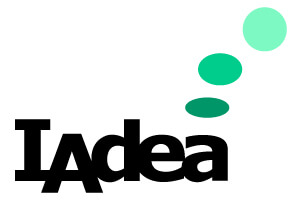Update: we’ve since changed a word in the title from “is” to “was”, largely because we found a solution as entailed in IAdea “heavily modify the Android source code to make it more robust, and more secure”.
Several digital signage software companies have “announced” their Android player software since the beginning of this year (none that we know are shipping with production quality yet, by the way). IAdea recently spoke to several of them, and a few have told us that they have serious concerns that Android may not be the best platform to invest in. Embracing SMIL and HTML5 seems to be a better choice.
Android is not one platform but fifteen! (if you don’t count hardware differences). What?! If you don’t believe us, take a look at Google’s official documents listing all 15 flavors of the Android API. If you are the technical guy in the company who has been asked to do the job, you probably have already found out about this. You must have been bombarded with questions like “why doens’t your software work on the Kindle Fire?” If you are the marketing guy in the company, please give your R&D fellas a break. They are telling you their true pain and you would have agreed if you knew how difficult it is to get an app to look right on the Adroid tablet, as demonstrated vividly by Apple’s CEO Tim Cook. Google is managing its platform so poorly that just recently “interest in Android phone app development has dropped 4.7 percent”.
Price of Android tablets will remain high. This is due to Android seriously losing the battle on the tablet front. Most people would probably agree with this, seeing the success of Apple’s iPad which is reported to have taken 73% of the tablet market, whereas no Android tablet owns more than 5%. Even among all Android devices, Google tracks the share of devices with 7″ or larger display (Google’s “xlarge” form factor) to be just around 5% of all Android devices in use. So while you may hear people still upbeat about Android devices, its success is really limited to mobile phones.
The consequence is that the supply of Android tablets will stay low, and price of all components not shared with the phone form factor (such as the 7″ or 10″ touch screens) will stay high. According to an industry insider, most Android tablet makers are betting on the 7″ size “because the iPad is not competing in that size” [yet. Ed.]. For practical use in digital signage, however, a larger screen is needed. The price of a 10″ Android tablet is around $400-500, close to twice of its 7″ sibling and significantly more expensive than a 10-inch IAdea digital signboard, which works merrily with most top CMS software options today via SMIL.
We can go on and list a dozen reasons why although Android may sound good on the surface, it really does not offer the right technology for use in the public space. However we would like to leave that lecture to your engineers who we are sure can provide you that list and more in no time.
When we spoke to our software partners, they told us many valuable observations that we would like to share here:
- Nobody cares if your system is running on Android as long as it delivers and plays according to schedule.
- We talk about Android because it sounds cool, but we really don’t know what to do with it.
- We are going do one proof-of-concept and see if any business comes along. We don’t really have a paying Android customer today.
Is there a solution? We think so.
Digital signage is about content that is dynamic and attractive, delivered on schedule and played back perfectly. What you need to achieve these while taking advantage of the hardware available is SMIL and HTML5. A recent survey indicates that more developers are interested in developing HTML5-based web apps than native Android tablet apps. An HTML5 web app will run across iOS, Android, and the upcoming Windows 8 from Microsoft. It will accomplish your much needed proof-of-concept and more. Best of all, it runs on all IAdea HTML5 Web Appliances today!
So if you are still debating whether you should move your digital signage assests to the Android platform, we’d say targeting HTML5 combined with SMIL open standard is a clearly wiser choice.
Sources:
- It’s Not Google’s Fault That Android Tablets Have Failed, DailyFinance, Mar 31, 2012
- The iPad Wins Because Android Tablet Apps Suck: An Illustrated Guide, PC Magazine, Mar 17, 2012
- Why there aren’t more Android tablet apps, by the numbers, ZD Net, Mar 21, 2012
- Forrester: No Android Tablet Has More Than 5% Share vs iPad. How Does Amazon’s Kindle Fire Compare?, TechCrunch, Mar 5, 2012
- Survey: Android programmers shifting toward Web apps, C|Net News, Mar 20, 2012

